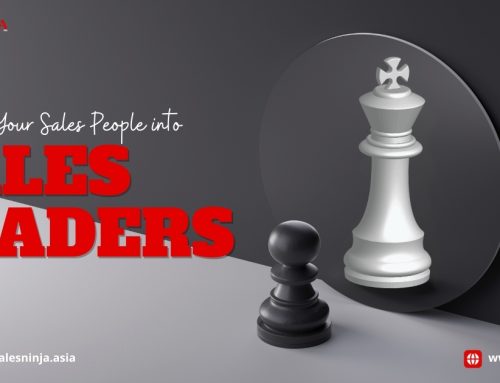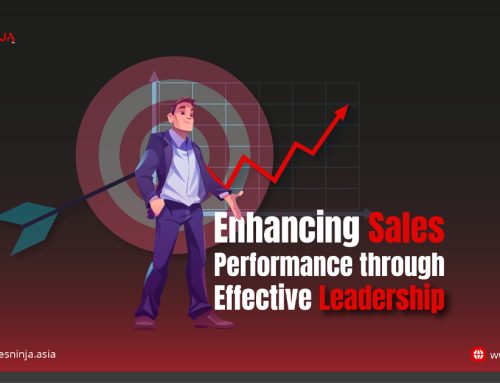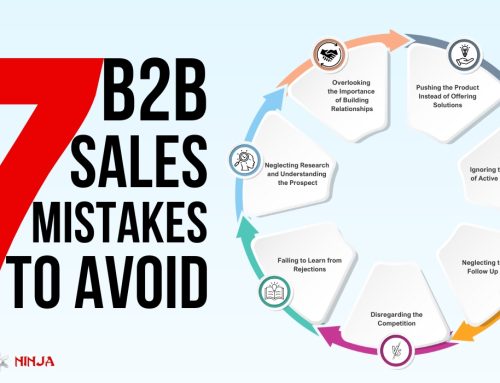The “retail apocalypse” as they call it, has cut down giants like Toys R’ Us, Topshop, Victoria’s Secret and many, many more. With a large presence in Asia, these American-based brands were hit hard and have not evolved fast enough to survive. In 2019 alone, over 7,069 store closures in the U.S. were announced – and we are not even done with the year yet. Forever 21, a well-regarded brand all around the world, is now joining the long list of fallen retailers. Is this a sign that companies are not taking enough steps to care for their sales? As a sales team that deals with – let’s say, property – what does this have to do with you? A lot actually. From challenging sales headwinds to ever-changing consumer habits, if you’re trying to sell a product or service – take a look at how Forever 21’s mistakes are lessons in sales for everyone, no matter the industry:
When you lose focus, you lose customers:
Marketed as the personification of the “American Dream” alongside the image of southern youth, Forever 21 made its mark with affordable, trendy clothing that captured the hearts of young women; the crowds at newly opened stores bordered on overwhelming when it was at its prime. Over time, they have made moves towards being the “one size fits all” store – introducing men’s wear, sportswear, home décor, make up, and accessories. In the wake of this diversification, they lost their appeal to the exact market segment they were making these changes for. By broadening their focus, they lost sight of their USP (unique selling point) and thus diluted their appeal.
This is not to say that diversification and innovation are bad for your company. In tough times, it is important to have a competitive edge and staying stagnant may only harm your company more. However, it is important to maintain your values and goals. Decisions made should follow the direction and image your company has already set. It will be difficult for your existing clients to re-engage you if they have lost their connection with you as the company works towards increasing revenue – they make up a valuable percentage of your clientele. Imagine how that will affect your market standing; you do not want to be losing existing customers AND potential customers.
When expansion is too fast, don’t forget your margins:
Forever 21 (formerly Fashion 21) started with a 900 square foot store in 1984 and proceeded to expand from 500 stores in 2010, to 600 in 2014 and 800 in 2018. They reached this number when they started branching out to different areas of the world, expanding into over 40 countries (Malaysia being one of them). However, this rapid expansion into new countries did not take different taxes, shipping, and export fees into account – not to mention the price hike after currency conversion and the influence of local consumer spending power. Not only that, their stores ranged from 40,000 square feet to 100,000 square feet – imagine the rental costs of space that large. Margins were smaller with this extra cost and experts are linking their bankruptcy to these rapid, ill planned expansions.
Not limited to branches or offices, sometimes even team expansions can come at the wrong time. As you see the numbers rise and profits flow in, the temptation to increase it threefold by trying to meet expected demands rather than current demands could lead you to increase both your number of locations as well as your number of employees. Proper measures to check for are:
- Are you capable of taking on additional work? – Adding a new location and a new team to manage might not seem so bad but if you take training, follow-ups and leadership roles into account, you will realise that there is a lot more added to your plate.
- Do you have the capital to invest in a new location/person? – You will not see immediate ROIs.
- Can your team push themselves and maintain their fighting spirit to tackle new issues that might come up with expansion? – Again, expansion in any way amounts to an extra load of work. Is your team able to cope with the current load? Are they on the brink of burn out already?
When consumers choose value over price:
Known for its affordable items, teens and young adults alike flocked to Forever 21 to get their wardrobe fix for each different season of every year. They were the epitome of “cool” for millennial young women. “Fast fashion” became a term because of powerhouses like Forever 21 and H&M. The mass production of clothes and its equally as fast bulk purchases pushed retailers to increase their production capacity and decrease production time. In doing so, quality has now come second to keeping up with the latest trends. Fast fashion has become synonymous with products that do not last past the first few months as well as environmental concerns raised from the hurried production process.
As such, it is important to be able to defend your value before your price. Consumers are more likely to buy your product or service if they understand the benefit you bring to them or their business. An example would be in the sale of property. Locations that are more beneficial – close to public transportation, food outlets or grocers – cost more but if these locations are also equipped with great facilities – a swimming pool, gym, spacious units – people are more likely to spend and invest. The trend of “shopping cheap” has died out amongst Millennials – who will make up around 35% of the working population by 2020. It is now time to appeal to the “smart shoppers” who are equipped with the resources to search for the cheaper alternative to your product – you will need to differentiate yourself by selling your value.
When honesty is a forgotten policy:
Forever 21 soon became the place to go to for knock off clothing from designer brands. The reason behind this unfortunate moniker came from almost 50 different lawsuits from well-known brands like Gucci as well as famous personalities like Ariana Grande. With the emergence of Gen Z, who are 55% more likely than Millennials to venture into starting their own businesses, this is a trending concern. More and more people are finding revenue streams through self-produced and designed products – the idea that big wigs like Forever 21 can make money off your ideas is excruciating. Not only that, they have been accused of racial discrimination as well as not paying their employees their dues. What does this say about the brand and its values? Your brand’s image and reputation is key to retraining and attracting customers as proven by Cone Communications’ millennial corporate social responsibility study that cited statistics proving that 88% of adults in the U.S. refused to make purchases from companies that employed “irresponsible” or “deceptive” business practices.
In an age where transparency is key in avoiding the loss of customer confidence, be as honest as possible. It may sound cliché and over used but there is a reason why lying was never awarded in school. The digital age has brought the fall of many an organisation who tried to cover up their unethical practices, only for them to become known. What was the consequence? At best, an apology was enough to make up for the dishonesty. At worst, companies shut down and businesses closed.
Even with all the issues above, the vital step that Forever 21 forgot to take was not to jump onto the bandwagon of e-commerce. Believing in their history of good sales, they did not see the need to rebrand or re-structure themselves to compete with their competitors’ growing online presence. Some businesses fail to realise that each generation has a different trend for sourcing and purchasing. What Millennials prefer is different from what Baby Boomers choose. As such, marketing and sales strategies have been geared towards Millennials for years now. Soon, Gen-Z will be taking over the population and the majority spending power. Are you and your company agile enough to navigate the change in consumer demands and trends before they happen?






Leave A Comment